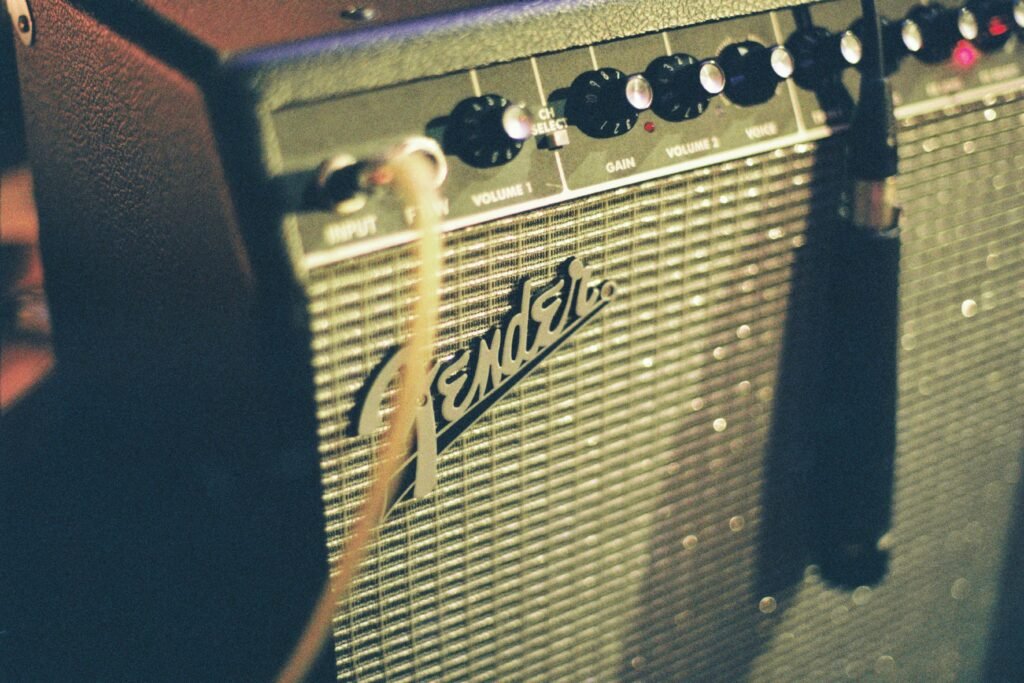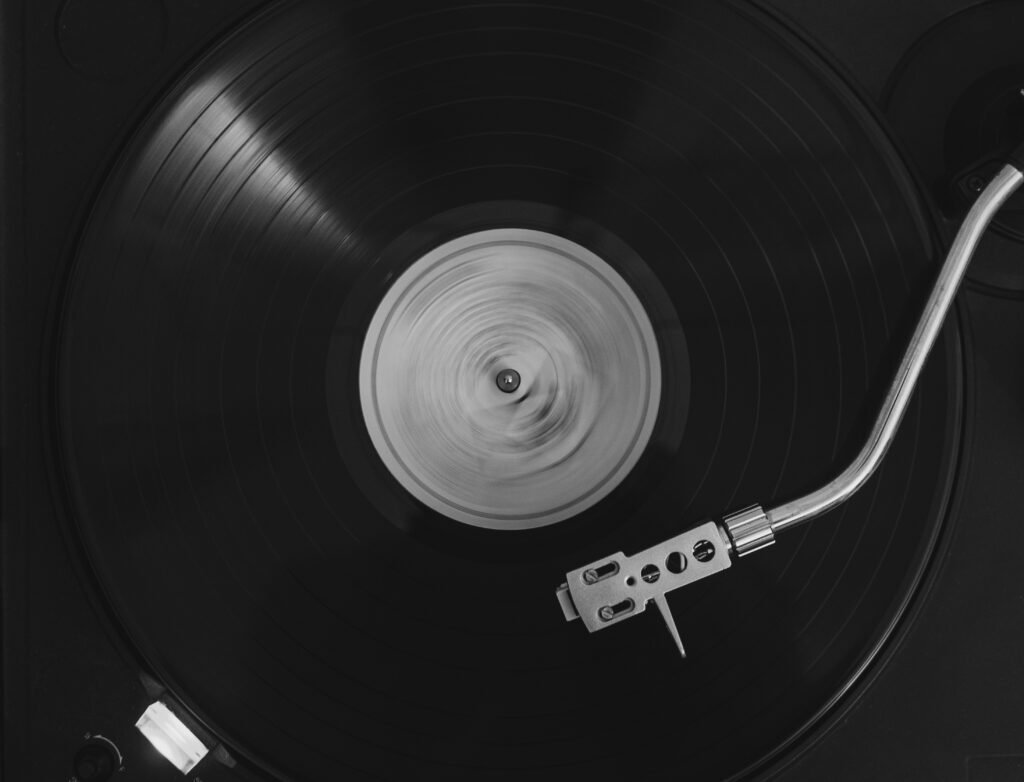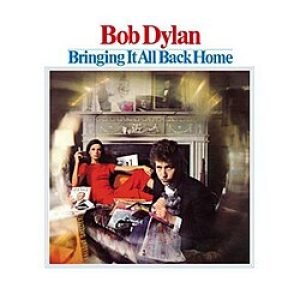When Bob Dylan released Bringing It All Back Home in March 1965, it marked a bold and deliberate turn in his artistic journey. Coming off the heels of The Times They Are a-Changin’ and Another Side of Bob Dylan, this album arrived at a time when Dylan was already being hailed as the voice of a generation. But instead of cementing his status as a protest singer, he chose to pivot, blending the poetic clarity of folk with the electric swagger of rock.
The album splits neatly into two halves. The first side is electric, featuring full-band arrangements that startled many of his folk purist fans. The second side returns to acoustic roots, but the lyrical content is more abstract and surreal than anything he had done before. This duality is not just structural. It reflects Dylan’s intent to blur the lines between the personal and political, between the real and the imagined.
Sonic Exploration

The sonic landscape of Bringing It All Back Home is as daring as its lyrical content. For the first time in his career, Bob Dylan stepped fully into the realm of electric instrumentation, and the result was a sound that was both jarring and exhilarating. Recorded in just a few days at Columbia’s Studio A in New York, the album carries a raw immediacy. The production is crisp without being polished, capturing the spontaneity of live performance while allowing each element to breathe.
Musical Arrangements
Tom Wilson, the album’s producer, played a key role in shaping its unique sound. The electric side of the album bristles with energy. Guitars snarl and shimmer, drums push the tempo forward, and the bass lines provide a steady undercurrent. The arrangements are loose but purposeful, giving Dylan’s vocals the space to roam and rant. Tracks like “Subterranean Homesick Blues” and “Maggie’s Farm” burst with rhythmic urgency, their sound echoing the growing restlessness of the mid-sixties.
On the acoustic side, the mood shifts but the clarity remains. Songs like “Mr. Tambourine Man” and “It’s Alright, Ma (I’m Only Bleeding)” strip things back to Dylan’s voice and guitar, yet they are anything but simple. The fingerpicking is precise, the vocal phrasing sharp, and the atmosphere charged with tension. Even without electric backing, these tracks feel expansive, thanks to their intricate arrangements and lyrical depth.
Genre-wise, the album is a hybrid. It bridges folk and rock in a way that had rarely been attempted before, let alone with this level of conviction. There are hints of blues, touches of country, and even a proto-punk edge in Dylan’s delivery. By fusing these elements, Bringing It All Back Home didn’t just flirt with new territory. It redrew the boundaries of what popular music could sound like.
Lyrical Analysis

Bob Dylan’s lyrics on Bringing It All Back Home mark a turning point not just in his own songwriting, but in the way lyrics were understood in popular music. Gone are the direct calls to action found in his earlier protest songs. In their place are surreal images, fractured narratives, and a torrent of ideas that challenge the listener to keep up.
The central themes are varied, but they orbit around a few key ideas: disillusionment, personal freedom, and the shifting nature of truth. “Subterranean Homesick Blues” reads like a stream-of-consciousness dispatch from the front lines of a cultural revolution. It’s fast, fragmented, and full of bite, critiquing everything from government control to social hypocrisy. “Maggie’s Farm,” on the surface a song about leaving an exploitative job, becomes a broader statement about rejecting conformity and refusing to play roles imposed by society.
Even the acoustic songs carry these themes, though in more introspective ways. “It’s Alright, Ma (I’m Only Bleeding)” is a philosophical deep dive, packed with aphorisms that feel both timeless and timely. Dylan dissects the illusions of consumer culture, religion, and politics, all while maintaining a sense of personal conviction. Meanwhile, “Mr. Tambourine Man” floats in a more dreamlike realm, offering a kind of poetic escapism that still feels grounded in emotional truth.
What makes these lyrics so impactful is their blend of poetic complexity and emotional clarity. They can be abstract and symbolic, but they always carry a weight of feeling. Dylan doesn’t tell listeners what to think, but he makes them feel the urgency of the questions he’s asking. There’s a sharp edge of cynicism in many of the lines, but also moments of tenderness and longing. That contrast gives the album its emotional depth.
Cohesion and Flow

Bringing It All Back Home is an album built on contrasts, yet it manages to hold together with a sense of deliberate structure. The decision to divide the record into an electric first half and an acoustic second half was bold, but it gives the album a clear arc. This two-part format allows Dylan to explore different emotional and sonic territories without losing the listener.
Track Progression
The electric side opens the album with urgency and momentum. Songs like “Subterranean Homesick Blues” and “She Belongs to Me” come in quick succession, each one riding a current of sharp wit and restless energy. The production has a live-wire intensity that connects these tracks, even as they shift between satire, love song, and rebellion. By the time “Bob Dylan’s 115th Dream” rolls in, the chaos feels purposeful. There is a sense of Dylan tearing through tradition to make space for something new.
The transition to the acoustic side is a turning point, but it doesn’t feel jarring. Instead, it brings a deep breath, a moment to reflect. The pacing slows, the arrangements strip down, and the focus shifts inward. Yet the themes remain consistent. Disillusionment, identity, and existential questioning continue to surface, just in a quieter, more contemplative form. “Mr. Tambourine Man” invites the listener into a dream state, while “It’s Alright, Ma (I’m Only Bleeding)” pulls them into sharp, grounded introspection. The album closes with “It’s All Over Now, Baby Blue,” a farewell that feels both personal and universal, tying a soft ribbon around the complex emotions that came before.
Thematic Consistency
Despite the shift in sound halfway through, the album maintains a strong sense of cohesion. Dylan’s voice, both literal and lyrical, acts as the glue. His perspective, his phrasing, and his thematic concerns remain steady, giving the album a unified feel. The journey from electric to acoustic is not a departure but a descent—from the noisy surface of the world into the deeper waters of thought.
Standout Tracks and Moments
Several tracks on Bringing It All Back Home rise above the rest, not because they overshadow the album’s unity, but because they crystallize the innovations Dylan was making at the time. These songs don’t just stand out. They define turning points in popular music.
Subterranean Homesick Blues
“Subterranean Homesick Blues” is a powerful opener and a standout in both style and impact. Its rapid-fire delivery and fragmented lyrics marked a shift in songwriting. With lines like “You don’t need a weatherman to know which way the wind blows,” Dylan blends streetwise observation with cryptic insight. The song’s rhythm, more akin to spoken word than traditional singing, laid early groundwork for rap and helped reshape how lyrics could function in a rock setting.
Mr. Tambourine Man
“Mr. Tambourine Man” stands out for its lyrical beauty and emotional resonance. The melody is gentle, almost hypnotic, but the real magic lies in the imagery. Lines like “Take me disappearing through the smoke rings of my mind” turn escapism into something sacred. It’s a song that drifts into the surreal without ever losing its emotional center. Even stripped down to just guitar and voice, it feels vast.
It’s Alright, Ma (I’m Only Bleeding)
“It’s Alright, Ma (I’m Only Bleeding)” is perhaps the most lyrically dense track on the album. It’s a blistering examination of modern life, touching on politics, media, and existential doubt. Dylan’s delivery is tight and unrelenting, and the song never lets up. A standout moment comes with the line “He not busy being born is busy dying.” It’s the kind of phrase that lodges itself into the cultural psyche, at once profound and painfully clear.
Bob Dylan’s 115th Dream
“Bob Dylan’s 115th Dream” offers a burst of surreal humor, starting with a famously botched intro that Dylan laughs through. Rather than editing it out, the moment was kept on the album, showcasing his willingness to break convention and his comfort in imperfection. The song itself is a wild, nonsensical journey that pokes fun at American myths, with Dylan leaning fully into absurdity without losing his grip on narrative control.
It’s All Over Now, Baby Blue
Finally, “It’s All Over Now, Baby Blue” is a quiet but devastating closer. Its soft, farewell tone carries a weight that lingers. Dylan’s voice is measured but emotionally rich, and the melody wraps around the listener like a curtain slowly drawing to a close. It’s not just an end to the album—it feels like the end of an era.
Artistic Contribution and Innovation

Bringing It All Back Home did not just reflect the changes happening in music during the 1960s—it helped drive them. At a time when the lines between folk and rock were clearly drawn, Bob Dylan walked across that divide and redrew the map. This album played a key role in reshaping popular music, challenging the notion that serious songwriting had to stick to acoustic roots or avoid the chaos of rock and roll.
Within the folk genre, Dylan had already been seen as a revolutionary. But this album pushed him beyond that label. By plugging in his guitar and adding a full band, he expanded the sound of folk music without discarding its spirit. The album didn’t just mix genres. It fused them into something new. Dylan’s blend of literary lyricism with rock’s energy and folk’s storytelling created a hybrid that would come to define the singer-songwriter movement of the late sixties and beyond.
The innovations weren’t just musical—they were thematic and structural as well. Dylan moved away from topical protest songs and leaned into ambiguity, surrealism, and introspection. His lyrics became more abstract, pulling from poetry and philosophy rather than current events. This shift opened new paths for artists across genres, from psychedelic rock to indie folk, who saw that music could be deeply personal, intellectually rich, and emotionally resonant all at once.
Another key innovation was the album’s structure. The split between electric and acoustic sides was not just a practical decision. It served as a statement of duality—a reflection of Dylan’s internal conflict and a broader cultural shift. Few albums at the time dared to be so self-aware in their design.
Closing Thoughts

Bringing It All Back Home stands as one of the most pivotal albums in Bob Dylan’s career and in the broader history of modern music. Its greatest strength lies in its fearless sense of transformation. Dylan doesn’t simply shift gears from folk to rock—he reconstructs what both genres can be. The album’s bold use of electric instrumentation, paired with lyrics that push the boundaries of poetic expression, marked a seismic moment in the 1960s music landscape.
Lyrically, the album is a tour de force. It balances biting social critique with introspective poetry, all delivered through Dylan’s unmistakable voice. The production captures the immediacy of the performances while allowing the songs to breathe. And though the divide between electric and acoustic sides could risk feeling disjointed, here it creates a meaningful tension that enhances the album’s impact.
If there’s a minor drawback, it lies in how demanding the album can be. Its abstract lyrics and shifting tones may alienate listeners expecting linear narratives or clean genre lines. But even this serves as a testament to Dylan’s commitment to authenticity over accessibility.
Official Rating
Rating this album a 9 out of 10 honors both its innovation and enduring influence. It’s not perfect—few revolutionary works are—but it is essential. Dylan didn’t just bring it all back home. He changed the home entirely, inviting a new generation of artists and listeners to think differently about what music could say and how it could sound. For any serious listener, this album remains a landmark not just in Dylan’s catalog, but in the story of modern music itself.
